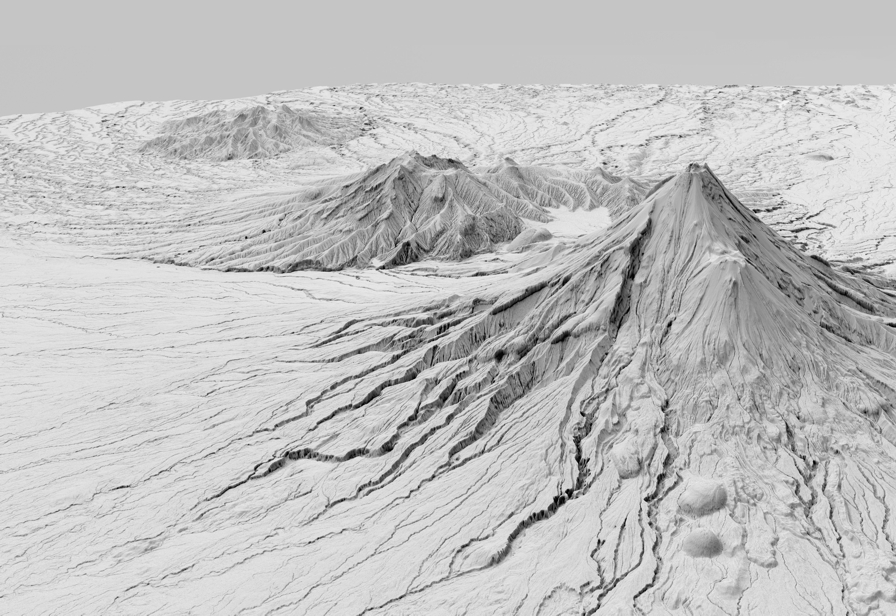Taranaki has just completed a high-tech aerial laser survey creating an exact 3-D map of the surface of the entire region.

3-D mapping of the entire Taranaki region has now been completed. (Photo: LINZ)
Taranaki Regional Council has worked with Toitū Te Whenua Land Information New Zealand (LINZ) on the ground-breaking LiDAR (Light Detection and Ranging) survey to gather land-surface and elevation data.
The data will be used to generate high-definition 3D maps and models that will have a wide range of uses in environmental management and planning, managing natural hazards, planning of facilities, services and infrastructure and tracking changes to the coastline and river channels.
“It’s fantastic to see the completion of the Taranaki Regional Council-led project and now we can start using that invaluable data to keep caring for our environment and supporting livelihoods,” says Council Director-Operations Daniel Harrison.
“There are a myriad of applications where we and our partners can use this data and it is available to the public as well. The level of detail is incredible and it will be a really useful tool for our staff.”
Funding for the $1m project has come from the Provincial Growth Fund (PGF), via LINZ, with contributions from the Council, New Plymouth District Council, Stratford District Council, South Taranaki District Council and the University of Auckland. Taranaki Regional Council was one of 10 regional councils nationwide given funding from the PGF for regional scale LiDAR mapping projects.
Mr Harrison said the LiDAR information will help the district councils in land-use planning and assessing the provision of services while the University of Auckland is interested in the surveys of the Taranaki Maunga volcanic cone.
“We’re expecting surveyors, engineers, construction companies, farm planners and others to find the maps and models useful as well.”
Bjorn Johns, LINZ Technical Leader, Imagery and Elevation said: “This dataset has been two years in the making, and it’s exciting that we now have accurate elevation information right down to the property scale for the entire Taranaki region. The new digital elevation data provides certainty to councils and landowners and ensures their terrain modelling is as accurate as possible.
“The LiDAR data allows for improved 3-D visualisation of the land that proves valuable context for planning and mapping, and we make the data available to anyone via the LINZ Data Service.
“As new datasets across the country are completed and contributed to the LINZ National Elevation Programme, the amount of national coverage increases, giving us the best possible picture of New Zealand.”
The survey involved a small twin-engine plane flying over Taranaki in 2021 using LiDAR laser scanning to map the terrain. The laser beams were not visible and didn’t affect electronics and the plane’s high altitude meant the public and livestock were not disturbed.
What the LiDAR surveys can be used for:
- Assessing vegetation cover and habitat quality.
- Getting a more accurate picture of erosion.
- Allowing better modelling of the effects of floods and droughts.
- Monitoring the changes in coastal dunes.
- Providing a clearer picture of the steepness of hill country land.
- Allowing sharper definition of sites of cultural significance.
- Monitoring natural hazards.
The Provincial Growth Fund (PGF) is one of six funds that are administered by Kānoa - Regional Economic Development & Investment Unit within the Ministry of Business, Innovation and Employment. The PGF is now fully allocated.